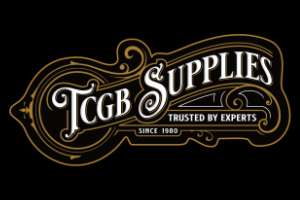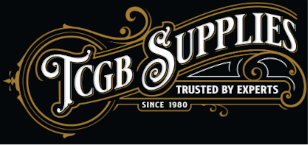Tattoo Needles Explained Why do Tattooists use 12 Sharps
Needles for tattooing formed from bone, bronze and iron have been used through the ages. This changed with the introduction of the carbon sewing needle. Steel needles made by the local blacksmith were hammered into shape and filed to a sharp point—eyes formed by flattening the end and punching a hole through. By the 1700s, needle-making had become a cottage industry in Redditch, England. Then, in the mid-1800s, increased demand led to factories with modern machinery. By the 1870s, with the new machinery came new automatic polishing techniques. And a high-quality needle was produced, and Redditch was fast becoming renowned for high-quality needles. Tattooists used sewing needles until the late 20th century.
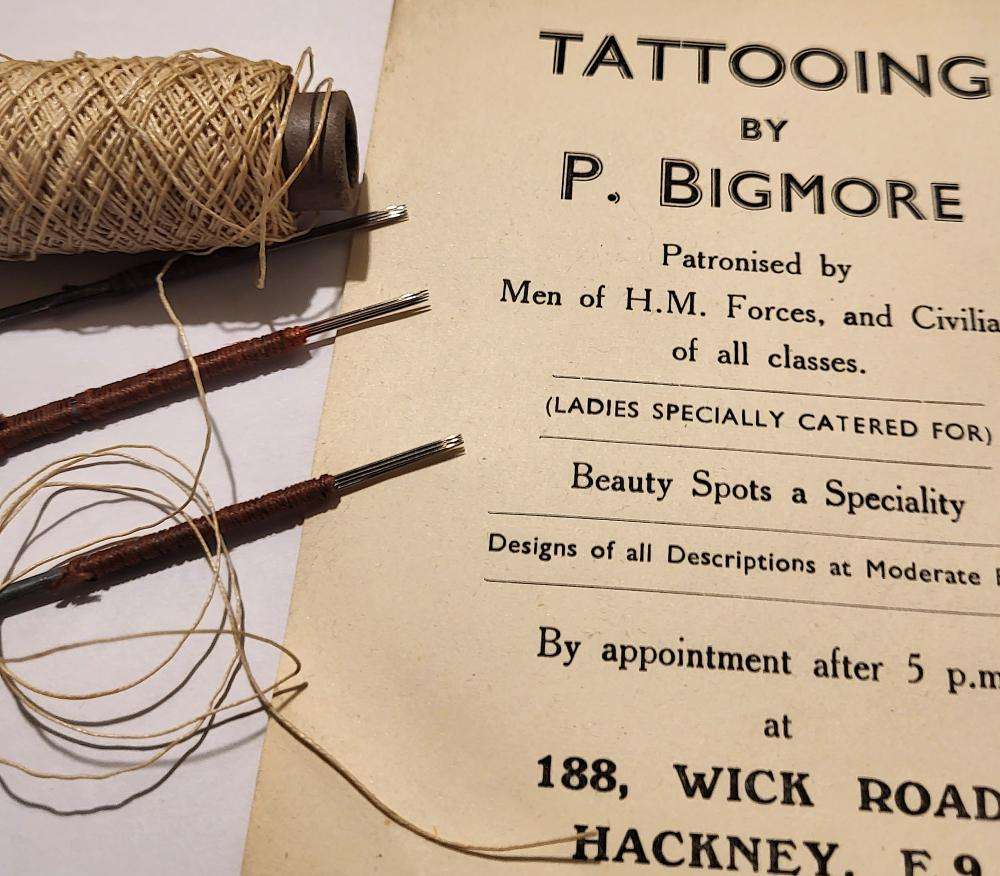
Until the mid-1970s, tattooists used size 12 Sharps sewing needles with eyes. These proved to be the ideal size to attach the needle bar for tattooing. Early tattooers would bind the needles with cotton, which was then attached to the needle bar with cotton. Needle bars back then were made from brass, steel and sometimes bicycle spokes. The spokes were filed flat on one side at the threaded end. The needle group placed on the flat surface would be wound with cotton to grip the remaining threads on the back of the bar.
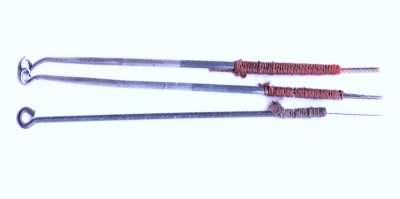
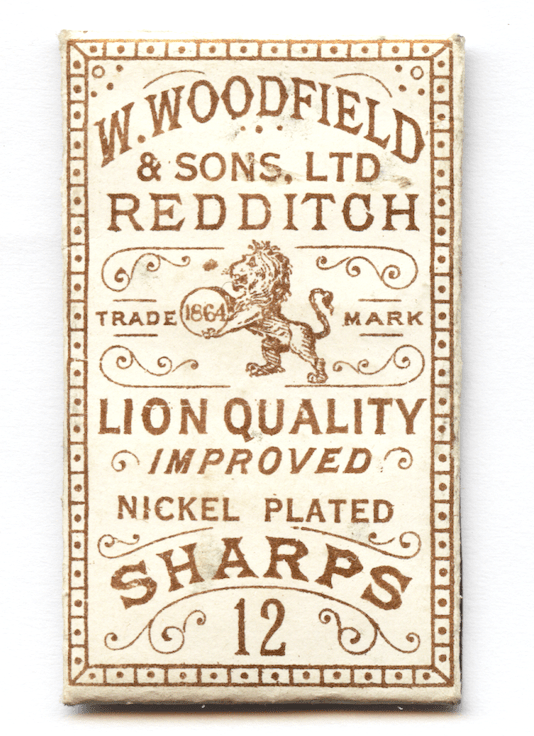
Eventually, tattooists started to solder their needles, but even during the 1960s and early 1970s, some tattooists were using cotton to bind their needles.
Tattooists in the know would buy their needles in bulk from haberdashery wholesalers. There was one just off Oxford Street in London. The needles came packed in packets of 25 bundled forty packs of needles wrapped in brown paper and tied with string.
By the early 1900s, Size 12 Sharps were the standard needles used by tattooists in England. They would buy them in a bundle of 1000 needles, carefully inspect them and discard damaged and blunt needles. Good needles would be carefully grouped into liners or shaders and attached to the needle bar either by tying them with cotton or soldered. An interesting note is that Sutherland MacDonald used ivory hand tools for hand work, and the needles were fixed with sealing wax.
Soldering needles was a fine art and would distinguish the good tattooists from the not-so-good ones. For decades the finest needles were recognised as being made in England and were exported around the globe. Many tattooists in the United States would proudly advertise on their business cards and flyers that they only used the best English needles. Maybe not so strange that some British tattooists would only claim to use the best Japanese needles. Tattooists being secretive, would always claim they use something different to their competition.
Tattoo needle-making was a closely guarded secret handed down from tattooist to apprentice. Each tattooist has their preference for the number of needles used, whether round groups, oval or flat—alignment often by eye or using a homemade needle-making jig.
Some tattooists had another secret that they kept to themselves, John James Beading needles, these were longer and finer than size 12 sharps, and you could get more needles in the same space. Some tattooists renowned for sharp, crisp lines used beading needles, and those that did fine lettering in scrolls used beading needles but kept it to themselves.
Beading needles in flat groups did delicate water shading, which you could not replicate with size 12 sharps needles. When you look at the work of Sutherland MacDonald, he likely used beading needles in his fine black-shaded work.
Tattooists advertised Clean, Sterile Needles, Antiseptic Needles, and Nickel-plated Needles. Early tattooers in the United States would often claim, on their advertising, the finest imported English needles. These were often sewing needles from the Needle Industries group of companies, later becoming Needle Industries Group Ltd. Redditch, England. Brands such as John James, Milward and Hall. All are part of the Entaco needle manufacturing group. Another name from the past is Alfred Shrimpton Needles.
By mid-1970, Needle Industries noticed increasing sales to tattooists buying size 12 needles as many were using new needles on each customer. As a result, they were getting through needles at an increasing rate. On enquiring why tattooists were purchasing such significant qualities of their needles, they became more aware that eyed size 12 sharps sewing needles were used for tattooing.
On discovering this buying trend, the management at Needle Industries noticed a marketing opportunity and offered to introduce Tattoo Points, a size 12 sewing needle without the eye. It would be cheaper to manufacture, they would provide better quality control, and so the Tattoo Needle was born. These came under John James Tattoo Points branded label.
Spaulding & Rogers of Voorheesville, New York, were also buying large quantities of size 12 sharps, custom-made to their specification. However, if calling Needle Industries sales to place an order for size 12 sharps, if you ask for Spaulding spec, they would not admit to stocking such a needle.
One problem with 12 Sharps carbon needles was that they do not autoclave without discolouring and sometimes corrode during sterilisation. Some older tattooists were reluctant to change needles for each customer as once they had a set of needles that tattooed a perfect line. They wanted to use it for as long as possible. So tattooists began to look for a stainless steel alternative. Hence came the Bug Pin tattoo needles, pins for mounting bugs, butterflies and moths. They were longer than 12 Sharps, more like the length of a beading needle most common size used for tattooing was 1, 0, 00 and 000. They had a resin ball on the top, and you would cut them to length before use. The advantage was they were made from stainless steel and could be autoclaved without discolouring. One of the best-known brands was the Pink Elephant branded bug pin from Austria, a company owned by Emile Hardt. In the UK, you could buy stainless steel bug pins from Watkins & Doncaster. These pins were shorter than the Pink Elephant brand.
It was not long before Needle Industries offered stainless steel tattooing points. Brands such as John James Super Hard Tattoo Points. Sometime during the early 1980s, Eric Davis from the CM & F Davis tattoo supply family contacted an acupuncture needle manufacturer in China to see if they could manufacture tattooing needles. Soon Chinese companies started to manufacture tattoo needles on the bar, so purposed made tattoo needles became available. Many tattooists began to purchase ready-made needles on the bar, sealed and sterilised by EO gas.
With the introduction of the tattoo needle cartridge, you have the advantage that needle groups can be changed simply by changing the small cartridge at the end of the tube, not needing to change the whole tube, taking longer. Along with disposable cartridge tubes, this makes the process of autoclaving tattoo needles and tubes redundant, as the tattoo needle assembly is now disposable. More tattooists are now changing to cartridge tattoo needles and disposable tubes due to ease of use and no need to autoclave equipment before use.
The fascinating history of tattoo needles shows how much the craft has evolved over time. Did any of the historical details surprise you? Perhaps you have knowledge or stories about early tattooing techniques, tools, or traditions in different parts of the world. If you’re a tattoo enthusiast, history buff, or even new to tattooing, I’d love to hear your thoughts! Have you come across vintage tattoo tools, unique regional practices, or does this history inspire you to explore the art further? Whether you’re a seasoned pro or just starting out, your perspective matters—drop your insights in the comments below!
©Lionel Titchener: Tattoo Club of Great Britain - Oxford
